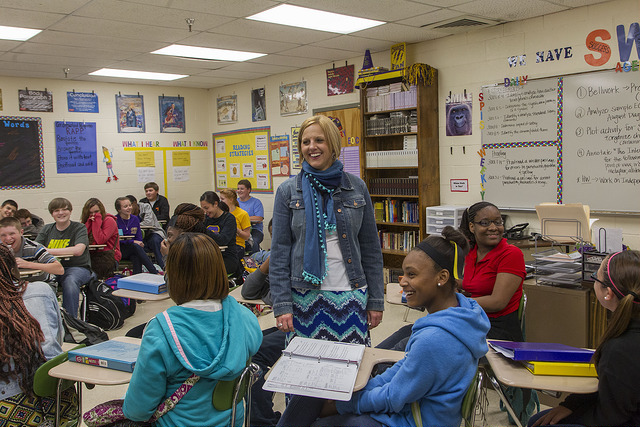“I’ve never had a teacher look like me.” I paused my writing and looked up at Samahd, a black male student I have known for four years. “I mean, I love you Mrs. Davis, but, sometimes you’re not always going to get it. Sometimes you just feel more comfortable with someone who looks like you.” He was right.
As much as I advocate for my students or as many professional developments I attend on cultural awareness and sensitivity it won’t always help. I don’t always “get it.” As a white, female teacher I am part of the “average face” of Tennessee teachers. I kept investigating and interviewed several other minority students. Their answers all led to a similar conclusion: We lack cultural diversity in our teaching staff.
Why is this important? I know a lot of us have read the literature. I jump at any chance to go to “cultural sensitivity” trainings that are offered because I teach at the most diverse school in Knox County. But, it hurts when you hear the problems from the mouths of the students you love and want to see represented.
After speaking to Samahd, and several other students, I looked up the education demographics for Knox County. Out of the approximate 31,000 students enrolled in 2014-2015, about 77 percent of them are white. The largest minority group of students, being black or African American, made up about 16 percent of the population. Now, let’s compare that to the teachers. Out of the approximate 4600 teachers, 95 percent of them are white whereas only 4 percent are black or African American. Even more alarming, less than 1 percent of educators identify as Hispanic for the 1500-plus Hispanic students in the district.
These numbers shocked me. It made me realize how much I really didn’t “get it.”
As passionate as I am about closing achievement gaps and making sure my minority students are represented and have access to a quality education, I realized I was still missing one important piece—I wasn’t giving them access to a diverse teaching staff.
I set out to make a change. Immediately. By the next class period, I knew I had to speak with my kids. I stood in front of my amazing, beautifully diverse classroom, and I asked them, “Who has ever been asked about becoming a teacher?” Out of 35 students, not one hand went up.
I realized this could be one of the problems: We aren’t asking students to be teachers and discussing how minority students can make a change. I realized how powerful these conversations could be and The Future Educator Leader Academy (FELA) was born.
FELA is a teacher-nominated leadership academy for students who are recognized as great potential educators. Students don’t necessarily have to express an interest in education to become a member. However, the goal is to expose them to the importance of the task—to make them aware of the difference they can make as teachers.
I thoroughly discussed with the staff that when nominating students to not exclude anyone based on grades. I wanted students from all walks of life. I wanted this to be inclusive and become a place for students who are never recognized to realize that they are worthy and needed for future generations.
I’m encouraged and inspired by my students. I have had several students who had never thought about education who now want to teach! As we gain momentum, the goal of the Future Educator Leader Academy is to start a pipeline of teachers who are going to get it. And we are well on our way.

